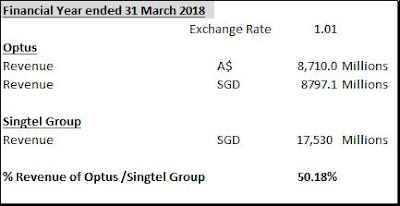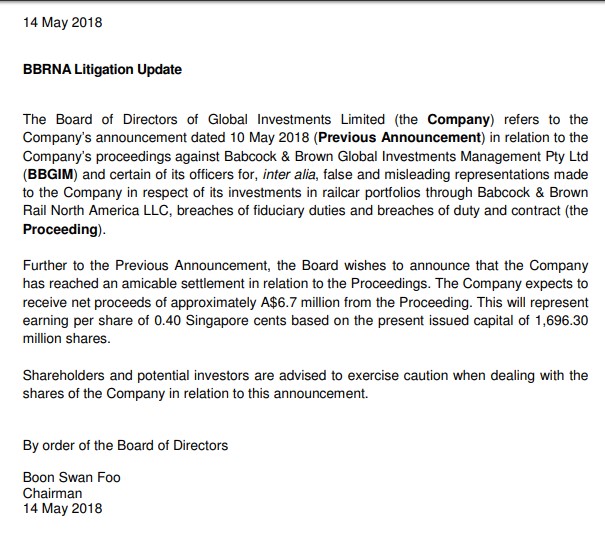Just a few days ago, I had a rather exasperated conversation with a colleague who is moonlighting as a property agent. My colleague is a 40 over years old lady who is notoriously well known to be very blunt in dealing with people. The ironic part is that she is a business development manager. I am not sure whether I should be upset or to just laugh off the entire episode. The conversation I had went something like this in my office pantry during lunch hours:
BK: "Hi Xiaoling, long time never see you back in office liao. How have you been?"
Xiaoling: "Hi BK, I am fine. Just that super busy these days with work. How about you? You ok?"
BK: "Yup, I am good. Eeeer, saw the latest pictures you posted on your Facebook and Wat's App. You got this "CEA" license on your profile picture and wearing the business suit. So, you into Property now ar?"
Xiaoling: "Hehe, yup...I got my Estate Agent License. I am marketing Park Colonial. Are you interested? By the way BK, please do not tell our Managing Director or anyone in our office that I am a qualified property agent now."
(I was feeling incredulous at this point as my colleague had actually blatantly posted her CEA license and new profile photo everywhere on her own Facebook and also Wat's App. I am sure she will get into trouble with my Human Resource team soon as the cat is out of the bag with the damning evidence splashed all over by her ownself).
BK: "Not really lah. I am actually contemplating selling off my current home and buying a re-sales HDB near MRT Station. It has always been my dream to be semi-retired and just do part time job."
Xiaoling: "What? Buying HDB is one of the stupidest thing to do. Investing in new and bigger private property is the way to make lots of money now. "
BK: "Eeeer, no thank you. I read that the market is filled with euphoria right now. The recent additional cooling measures by the government is also quite harsh. Probably not a good time to go in. Perhaps another 1 year to 2 years if I got extra spare cash and the cooling measures on ABSD on 2nd property gets reduced."
Xiaoling: "OMG! Let me tell you how wrong you are. Now is the best time to go into buying new private property. Singapore is experiencing the start of a property upswing. If you buy now, you will be buying at a low price. BK, you need to move fast else you will miss the boat. The peak of this current upswing will be another 2 to 3 years. If you buy only next year or after, you will be buying at the peak. You will regret it if you don't listen to me. I am many years older than you and have lived through many such property cycles."
BK: "Eeer, I will still prefer to wait. I have been reading on forums and investment blogs such as Propertysoul. Most of them are exercising caution over the current market. In fact, most of them thinks that the current new launches prices are super high. Let me Wat's App you my favorite property blog."
Xiaoling: "Aiyo, what Propertysoul? Seriously, I have never heard of it before. BK, you are a very weird guy, read and believe so funny stuff. Property cycle upswing always last for 3-4 years. I am telling you that we are just starting the upswing cycle and this is definitely the best time to buy new property just before the peak. This is common knowledge and common sense. EVERYONE knows this basic fact. Also in Singapore, the property market will never crash. Our government will ensure it appreciate gradually over time definitely."
(Ok, at this juncture, I can sense my colleague getting work up as she starts to raise her voice after reading a while on a post on Propertysoul. She must be thinking of how silly I am and lacking general knowledge. I always believed that investor sentiment is what drives the entire market. Market confidence can just crash quickly like what happened in 2008 which led to rapid exit of funds and prices of assets dropped like flies. There is no fixed rule that says an upturn cycle will always be 3 or 4 years. Who can predict with absolute certainty?)
BK: "Haha, yup, you are probably right. If I really miss the boat, then too bad for me. Just not comfortable to upgrade or buy new property now. By the way, when are you going to submit to me your sales pipeline report for compilation and reporting to our Managing Director?"
Xiaoling: "Oh, pai sei, I still owe you that right? I will pass to you as soon as possible. I recall I got an appointment with a prospective retail client. Need to go off first. Bye!"
With that, my colleague beat a hurried retreat. It was only later that I discovered that my colleague may have been upset at a post by Vina from Propertysoul on "Buyers beware: Misleading message on overseas properties" posted on 24 July 2018. Let me quote what was written: "Good or bad days, property agents still need to make a living...Very soon you will see companies selling alternative investment and agents marketing overseas properties again. The latter will claim to have no ABSD and seller stamp duty, easy to obtain mortgages and attractive returns."











